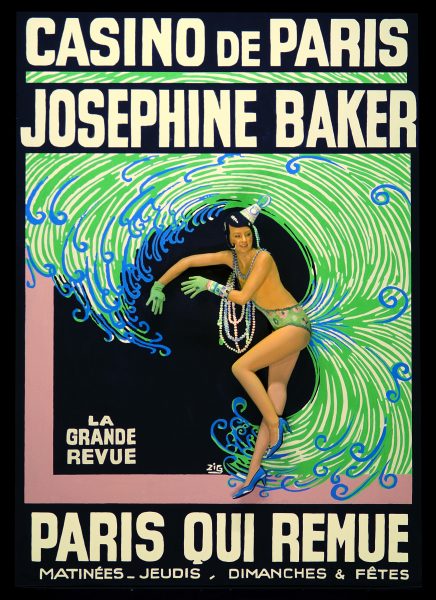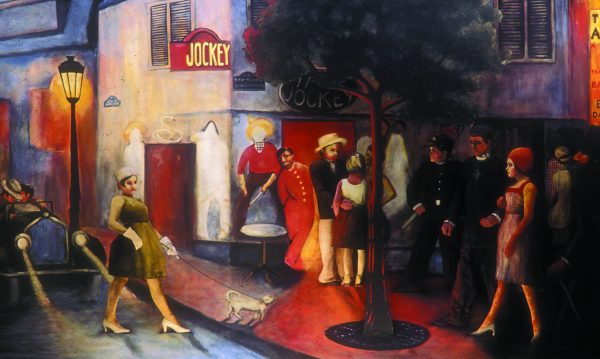
Paris, Rome, Florence, Naples and Milan. Those were must-see destinations for young 18th century English aristocrats sent abroad to round out their formal education and give them the requisite cultural veneer. In that era, of course, aristocrats meant lords, not ladies.
Produced by Diane Challis Davy, “The Grand Tour” is this year’s theme of the Pageant of the Masters, presented in two surprisingly divergent acts at the Irvine Bowl on the Festival of Arts’ grounds through Aug. 31.
Act I lets the audience follow Charles Blair, a privileged young swain on his own grand tour of requisite cultural sites via paintings and sculptures. Written by Dan Duling and presented by actor Richard Doyle, a skillful narrative lets us see the sights through a still inexperienced man’s eyes.
A painting by Joshua Reynolds, “Henry Fane, Inigo Jones and Charles Blair,” represents members of England’s nobility, and one might deduce that the latter became a catalyst for the story.
Pageant regulars are familiar by now with how a painting or sculpture comes to life on stage with help from appropriately made-up and costumed volunteers embodying anyone from Greek gods to war heroes to denizens of ladies’ salons.
This year, it’s not just the works of art themselves that are brought to life, but principals like Charles (actor Wesley Alfvin cavorting on stage and Charles Shaughnessy giving Charles voice) are introducing themselves physically to the audience. A small replica of Charles’ carriage progresses across a backdrop depicting 18th century European borders. Music composed by contemporary and traditional composers is, as in previous years, a vital component of the show.
Narrative between father and son is amusing with the elder Blair admonishing his son to get serious again after the presumed debauchery of Venice’s Carnival, represented here by paintings by Pietro Longhi, “Ridotto of Venice,” and Giovanni Tiepolo “Minuet,” for example. There’s politically incorrect levity with Blair the elder embarking on his own tour of Scotland and grousing to Charles about “Scottish savages.” They do appear a bit wild in David Allan’s painting “Highland Wedding at Blair Atholl.”
Ancient Rome is represented by the marble sculpture “Hadrian’s Villa” (artist unknown) and Constantin Hansen’s “Danish Artists in Rome.”
“Dan Duling and I had compiled a huge amount of research on the Grand Tour of the 18th century. We thought that it would be wonderful to create a series of narrative ‘letters’ between characters we created based on real correspondence of that era,” she wrote via e-mail. “During the last several years we have had research groups of over 80 people of all ages.”
The most intricate and poignant storyline here is reserved for “Lord & Lady Hamilton in Naples,” accompanied by several paintings of Emma Hart, a beautiful woman who posed in costumed mini-performances called “attitudes.” (Emma the Spinstress” and “Emma Hart, Lady Hamilton as Circe,” both by George Romney.)
Of lower class origins and aided by her beauty, she ascended, but unraveled when she tragically fell in love with and left her husband for British war hero Horatio Nelson. His death left her bereft of “male protection” and she died destitute.
This segment subtly points up the difference in privilege between classes and sexes at that time, with Charles and his peers at one end and Emma at the other.
It’s the chronology of Act II that baffled some. Charles’ journey appears to end when the action shifts to America, to the exploits of Buffalo Bill (Phil Spangenberger) and Annie Oakley (Kristina Dizon,) taken out of their picture frames to demonstrate horsemanship and shooting skills. The ensemble visited Europe and England in the 19th century.
The salute to three 19th century women sculptors living in Rome represented by Harriet Hosmer (“Zenobia in Chains,”) Edmonia Lewis (“Forever Free,”) and Emma Stebbins (“Angel of the Waters.”) proves educational. The trio worked in marble and bronze and formed a vanguard of independent, successful 19th century women artists.
The first act’s male centricity is also relieved by depictions of women who had the nerve to travel alone, with three paintings by James Tissot’s “Waiting for the Train,” “Embarkation at Calais” and “The Ball on Shipboard.”

The action skips back and forth across the pond with “Chez Bricktop Presents.” It is a jazz-centered sequence featuring musicians like Louis Armstrong, Duke Ellington and others who performed at Ada “Bricktop” Smith’s nightclub in Paris. The highlight here is a poster of “Josephine Baker at the Casino de Paris” by Zig Louis Gaudin. It shows the fabled dancer sporting peacock feathers in place of the notorious banana belt. There’s also reference to the Harlem Renaissance, an epoch worthy of its own show. (Archibald Motley’s 1929 “Jockey Club.”)
While it may seem like a hodgepodge to some, Challis said that the variety was highly intentional, including Duane Hanson’s corpulent plastic “Tourists” as humorous relief to our current congestion woes.
And then, there has to be the traditional ending with Leonardo DaVinci’s “Last Supper.” How that comes about won’t be revealed here.
“The Grand Tour” Pageant of the Masters. Through Aug. 31, 8:30 p.m. Festival of Arts grounds. Tickets $15-$230.




